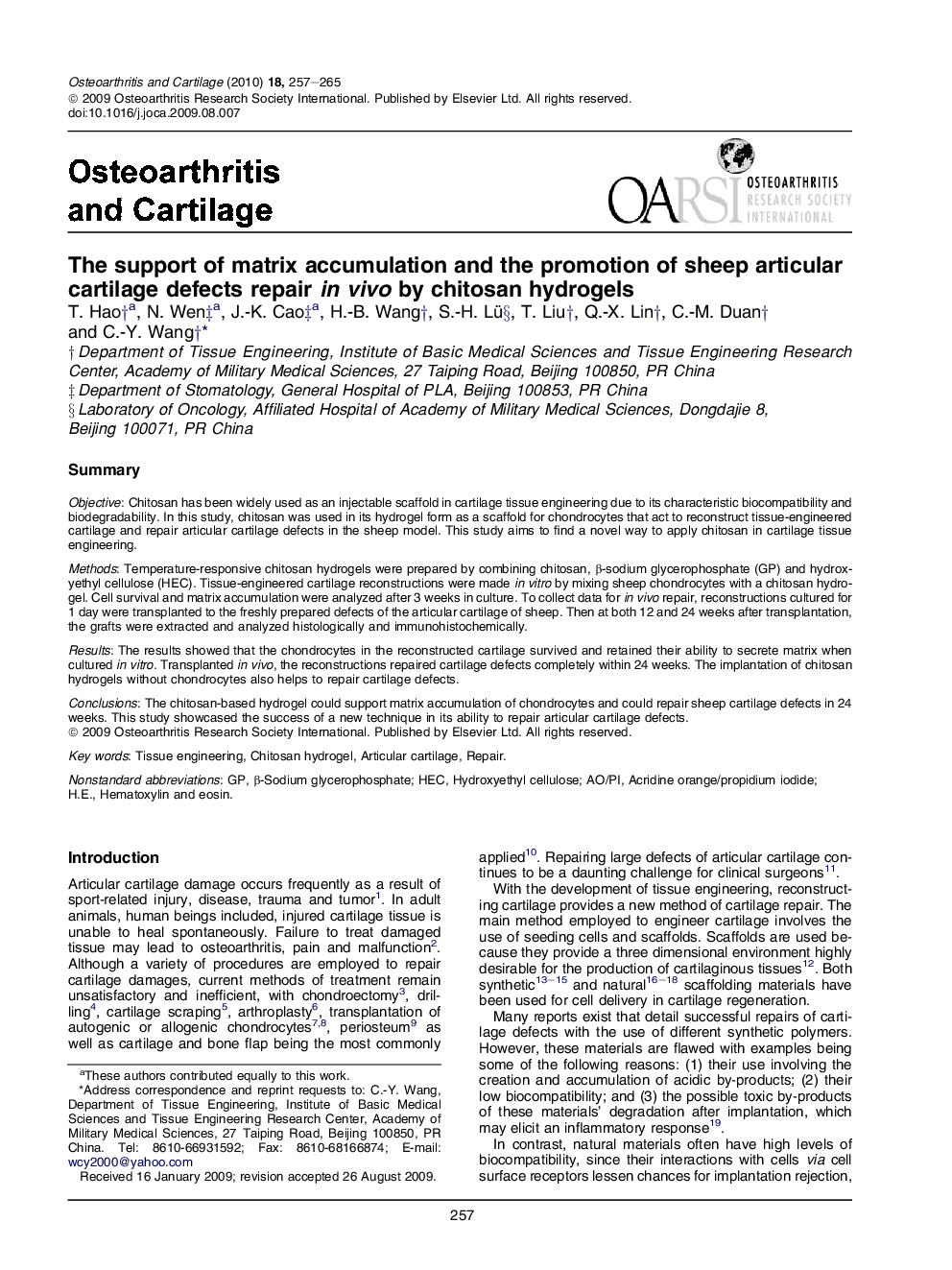| Article ID | Journal | Published Year | Pages | File Type |
|---|---|---|---|---|
| 3380547 | Osteoarthritis and Cartilage | 2010 | 9 Pages |
SummaryObjectiveChitosan has been widely used as an injectable scaffold in cartilage tissue engineering due to its characteristic biocompatibility and biodegradability. In this study, chitosan was used in its hydrogel form as a scaffold for chondrocytes that act to reconstruct tissue-engineered cartilage and repair articular cartilage defects in the sheep model. This study aims to find a novel way to apply chitosan in cartilage tissue engineering.MethodsTemperature-responsive chitosan hydrogels were prepared by combining chitosan, β-sodium glycerophosphate (GP) and hydroxyethyl cellulose (HEC). Tissue-engineered cartilage reconstructions were made in vitro by mixing sheep chondrocytes with a chitosan hydrogel. Cell survival and matrix accumulation were analyzed after 3 weeks in culture. To collect data for in vivo repair, reconstructions cultured for 1 day were transplanted to the freshly prepared defects of the articular cartilage of sheep. Then at both 12 and 24 weeks after transplantation, the grafts were extracted and analyzed histologically and immunohistochemically.ResultsThe results showed that the chondrocytes in the reconstructed cartilage survived and retained their ability to secrete matrix when cultured in vitro. Transplanted in vivo, the reconstructions repaired cartilage defects completely within 24 weeks. The implantation of chitosan hydrogels without chondrocytes also helps to repair cartilage defects.ConclusionsThe chitosan-based hydrogel could support matrix accumulation of chondrocytes and could repair sheep cartilage defects in 24 weeks. This study showcased the success of a new technique in its ability to repair articular cartilage defects.
